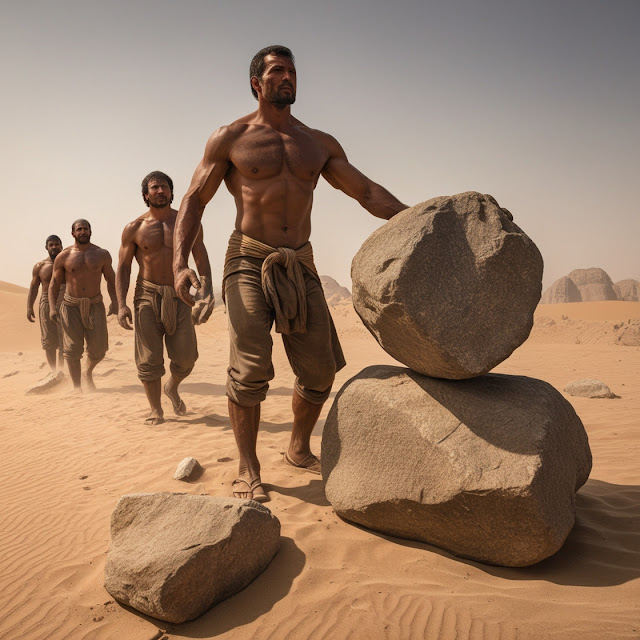If you want to shop online, you can visit our online shopping 9t9,
The book, “The Myth of Suffering Slaves in Pyramid Construction” is one of its kind as it defies the age old stereotype of slave labor being relied on in the construction of Egypt’s pyramids. Instead, the book emphasizes the skills, commitment and the pride of those workers who shaped and constructed the pyramids. In this case, it brings forth a lot of history, fresh archaeological research, and an examination of Egypt to eradicate the myth of slave based work as functional. From generously detailed writing, the author helps the readers appreciate the sheer amount of human labor which went into making these wonders possible.
Review:
Revisiting History with Fresh Eyes The most compelling aspect of this book is how it systematically dismantles the myth of suffering slaves in pyramid construction. The author starts by tracing how this misconception originated—from misinterpretations of ancient texts to exaggerated accounts by early historians and then explains why the recent discoveries contradict such views. By the end, readers do not only learn how the pyramids were built; they experience its culture and the pride of labor, turning construction sites from torture zones to hubs of activity.
Archaeological Evidence and In-Depth Research This book is heavily evidence-based, particularly with archaeological evidence such as the workers settlements that have been discovered in proximity to the pyramids and remains that show evidence of care and feeding rather than oppression. The author convincingly demonstrates that these workers were social equals and most likely skilled craftsmen and builders engaged in work that was highly regarded. This information is provided for the layman, but with enough detail to please the most zealous and scholarly historians.
Dispelling Hollywood Myths This chapter is one of my favorites because it discusses the role of global pop culture, especially movies, in the popular belief of slaves building the pyramids. From the early days of cinema and even till the modern era, Hollywood has largely postulated the dominated perception of pyramid construction being an extremely labor intensive, slave based industry. The author takes apart these images, outlines the flaws in history they represent and their effect on the views of ancient Egyptian civilization. This particular chapter was interesting as it showed how strong an influence the media can have over the way history is viewed.
Making These Workers Real The author does an incredible job of making the workers real, human beings. Far from dismissing them in the dark corners of the book as just anonymous and insignificant workers, the book depicts their experiences, drawing attention to the likely bonds of togetherness and achievement they enjoyed. Those who worked on the pyramids were not only fed and housed but also valued their contribution to the building as evidenced by the fact that they were referred to as ‘friends of Khufu’ who was the king for whom the Great Pyramid was constructed. This is a positive depiction as it enables the readers appreciate the workers more than the bricks themselves.
Well-Written and Creative This book could more easily have turned out to be overly dull or too academic textbook. However, the author uses simple story telling techniques to capture the reader's attention. The level of clarity and transition between chapters is motivational as all the chapters work towards a common goal of building and demonstrating the myth and its deconstruction. The author’s love for this subject matter makes this book suitable for both casual readers and historians focused on Egypt.
Even within the present context, “The Myth of Suffering Slaves in Pyramid Construction” deals with historical criticism and presents additional arguments for the scrutiny of those myths, that would otherwise be dull and largely go unchallenged. One recognizes that history is created by the victor, and therefore it is in human nature to probe and venture into ideas that are generally ‘known as truthful’. This becomes highly relevant today when one is encouraged to learn the different histories and the importance accorded to all cultures.
Conclusion: ‘The Myth of Suffering Slaves in Pyramid Construction’ is not merely a book on history; it’s a reassessment of what humanity has accomplished, as well as a tribute to the stories behind famous monuments. It is an excellent book for readers interested in ancient societies, work relations histories, or the role of social narratives. The work is enlightening, stimulating and… conquers one of the greatest questions of the world’s civilization in a more distinctive manner. Worth reading!








0 Comments